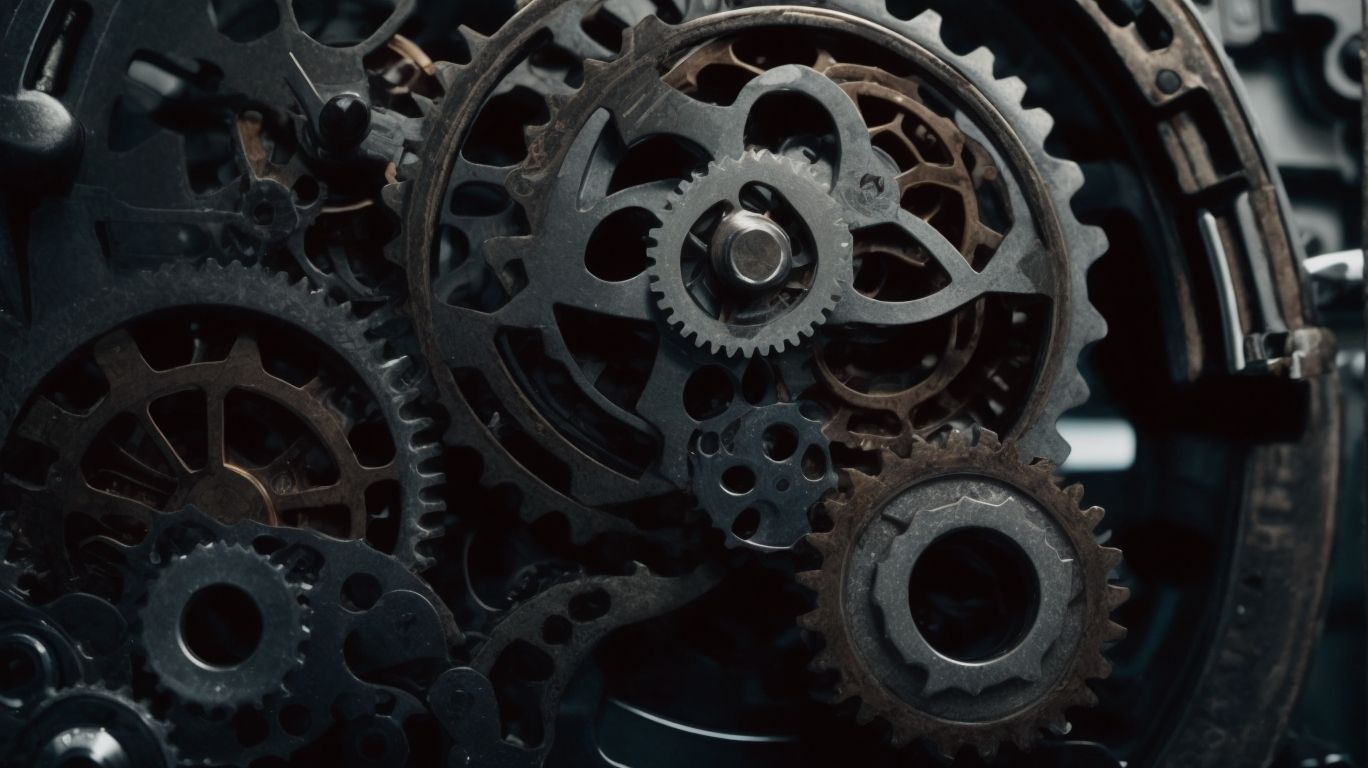Have you ever wondered what drives human behavior? In the field of psychology, the concept of drive plays a crucial role in understanding our motivations and actions. From primary and secondary drives to biological and social motivations, drive encompasses a wide range of factors that influence our behaviors.
In this article, we will explore the different types of drives, motivations behind them, and how they affect our behavior. Let’s dive into the world of drive in psychology and uncover its implications on our mental health and overall well-being.
Contents
- 1 What Is Drive in Psychology?
- 2 What Are the Different Types of Drives?
- 3 What Are the Motivations Behind Drive?
- 4 How Does Drive Affect Behavior?
- 5 What Are the Implications of Drive in Psychology?
- 6 Frequently Asked Questions
- 6.1 What is the concept of drive in psychology and why is it important to decode?
- 6.2 How do motivations play a role in the concept of drive in psychology?
- 6.3 What are the different types of motivations that contribute to drive in psychology?
- 6.4 What are the implications of understanding the concept of drive in psychology?
- 6.5 How can the concept of drive in psychology be applied in daily life?
- 6.6 What are some potential negative effects of a lack of drive in individuals?
What Is Drive in Psychology?
Drive in psychology refers to the internal mechanisms that propel individuals to engage in certain behaviors in order to satisfy physiological or psychological needs.
Drive plays a crucial role in motivating behavior, acting as a force behind actions aimed at fulfilling basic needs or desires. The Drive Reduction Theory posits that individuals are driven to reduce internal tensions (drives) caused by unmet needs, leading them to take actions that alleviate these discomforts.
On the other hand, the Incentive Theory puts emphasis on external stimuli and rewards that drive behavior. It suggests that individuals are motivated by the anticipation of rewards or incentives associated with specific actions, influencing their choices and behaviors.
What Are the Different Types of Drives?
In psychology, drives can be categorized into different types, including primary drives that are essential for survival, secondary drives that are learned through experiences, and stimulus-driven drives that arise from external cues.
Primary drives, such as hunger and thirst, are biologically driven and vital for the survival of an individual. These innate needs push individuals to seek out food, water, and other essentials to maintain homeostasis.
Secondary drives, on the other hand, are acquired through experience and association. These could include the drive for success, achievement, or affiliation, which are shaped by social interactions and personal aspirations.
Stimulus-driven drives are triggered by external factors in the environment, like the drive to explore new places or try new activities based on sensory inputs or environmental cues.
Understanding these different categories of drives is crucial in explaining human behavior and motivation, as they influence our actions and decision-making processes in various situations.
Primary Drives
Primary drives are fundamental biological needs that are necessary for an individual’s survival and well-being, such as the need for food, water, and shelter.
In psychology, these primary drives play a crucial role in motivating behavior and ensuring the survival of the individual. Hunger and thirst, for example, are instinctual drives that push individuals to seek out nourishment and hydration to maintain their internal balance and function optimally. Survival instincts rooted in the primal areas of the brain drive individuals to protect themselves from harm and ensure their continued existence. Understanding these fundamental drives provides insight into human behavior and the intricate balance between biological imperatives and psychological processes.
Secondary Drives
Secondary drives are acquired through conditioning and reinforcement, representing internal needs that are shaped by individual experiences, societal norms, and cultural influences.
These drives go beyond the basic biological instincts and play a crucial role in guiding an individual’s behavior towards achieving certain goals. Through the process of reinforcement, positive or negative stimuli are employed to strengthen or weaken the association between a behavior and its consequences. This conditioning leads to the development of learned behaviors, where actions are influenced by anticipated rewards or punishments.
Intrinsic rewards such as a sense of accomplishment, personal fulfillment, and self-satisfaction also contribute significantly to the formation of these internal motivations. By understanding the intricate interplay between reinforcement, conditioning, and intrinsic rewards, psychologists can delve deeper into the complexities of human behavior and motivation.
Stimulus-Driven Drives
Stimulus-driven drives are influenced by external cues and environmental stimuli that prompt specific behaviors or responses, showcasing the impact of learning and cognitive processes on motivation.
In essence, when an individual encounters a particular stimulus, it triggers a specific response that has been learned and associated with that stimulus. These learned associations play a crucial role in shaping behaviors and determining the direction of motivation.
Cognitive processes, such as perception, memory, and decision-making, also contribute significantly to how individuals interpret and respond to stimuli. Social factors, including cultural norms, peer influences, and societal expectations, further influence the formation and expression of drives, adding layers of complexity to the dynamics of motivation.
Learned Drives
Learned drives are developed through conditioning processes that establish habits, preferences, and behavioral patterns based on past experiences and learned associations.
These learned drives are deeply ingrained within an individual’s psyche, driving their actions and decisions often without conscious awareness. By repeatedly pairing a stimulus with a particular response, an individual forms associative links that dictate future behaviors. Through operant conditioning, reinforcement serves as a crucial mechanism in solidifying these learned drives. Positive reinforcement increases the likelihood of a behavior being repeated, while negative reinforcement encourages avoidance of certain behaviors. Over time, this process shapes an individual’s motivations, desires, and overall behavioral repertoire.
What Are the Motivations Behind Drive?
Motivation behind drive can stem from various sources, including biological needs for survival, social connections, and emotional well-being, influencing individuals to engage in specific behaviors.
Biologically speaking, the primal instinct to seek food, shelter, and reproduction is deeply ingrained in human nature, compelling individuals to act in ways that ensure their survival.
Social influences play a significant role in shaping motivation, as individuals often conform to societal norms or seek approval and acceptance from peers, driving their behavior towards certain actions.
Emotional factors, such as the desire for happiness, fulfillment, or avoidance of pain, also play a crucial role in motivating individuals to pursue specific goals and behaviors in their lives.
Biological Motivations
Biological motivations are driven by physiological needs such as hunger, thirst, and sleep, essential for maintaining homeostasis and ensuring the body’s survival.
In psychology, the concept of physiological needs plays a fundamental role in understanding human behavior. These needs are deeply rooted in the biological imperatives necessary for the body’s sustenance and overall well-being. When these basic needs are not met, individuals are compelled to take actions to fulfill them, often driven by powerful survival instincts.
Homeostatic mechanisms within the body help regulate these physiological needs, ensuring that essential resources are maintained at optimal levels. For example, the sensation of hunger prompts individuals to seek out food to restore energy levels and maintain stability. Similarly, the drive for thirst motivates people to consume fluids to prevent dehydration and maintain proper bodily functions.
Social Motivations
Social motivations arise from the need for belonging, acceptance, and connection with others, influenced by cultural norms, societal expectations, and individual differences.
Interpersonal relationships play a crucial role in shaping an individual’s motivations, as they provide emotional support, validation, and a sense of identity within a social group. Additionally, social interactions trigger feelings of cooperation, competition, and comparison, influencing one’s drive to achieve personal goals and fulfill social roles. Cultural influences further impact motivation by dictating values, beliefs, and acceptable behaviors that guide an individual’s pursuit of success and self-fulfillment. Understanding the interplay of these social factors helps psychologists analyze and address the diverse motivations that drive human behavior.
Emotional Motivations
Emotional motivations encompass psychological needs for fulfillment, happiness, and psychological balance, driving individuals to seek experiences that satisfy their emotional well-being.
When **fulfilled**, these psychological needs create a sense of inner satisfaction and contentment, contributing to an individual’s overall mental health. Positive psychology emphasizes the importance of finding balance in emotions to cultivate resilience and enhance one’s quality of life.
- Self-actualization, one of the highest stages in Maslow’s hierarchy of needs, focuses on personal growth and fulfillment, pushing individuals towards achieving their full potential.
- Achieving equilibrium in emotions can lead to improved relationships, productivity, and overall happiness.
How Does Drive Affect Behavior?
Drive plays a significant role in shaping behavior in psychology, influencing actions and decisions through theories such as Instinct Theory and Drive Reduction Theory.
Instinct Theory, proposed by psychologists like William James, suggests that certain behaviors are driven by innate biological instincts, such as thirst, hunger, and self-preservation. These instincts are essential for survival and are hardwired into human behavior.
On the other hand, Drive Reduction Theory, developed by Clark Hull and others, posits that motivation arises from the need to reduce internal drives that create discomfort or tension. This theory explains how individuals seek to maintain homeostasis by fulfilling basic needs and reducing psychological tension.
Instinct Theory
Instinct Theory posits that certain behaviors are innate and biologically determined, reflecting evolutionary adaptations that drive specific actions in response to environmental stimuli.
These instinctual responses are seen as crucial survival mechanisms that have developed over generations to ensure the species’ continued existence. Instinctual behaviors are often automatic, occurring without the need for learning or conscious thought. They are rooted in genetic predispositions that have been shaped by natural selection to enhance an individual’s chances of survival in challenging environments.
Drive Reduction Theory
Drive Reduction Theory proposes that individuals are motivated to reduce internal drives such as hunger or thirst through behaviors that lead to reinforcement and the satisfaction of physiological or psychological needs.
This theory suggests that when an individual experiences a physiological need, it creates a tension or drive that pushes them to seek out ways to satisfy that need. Through the process of reinforcement, which involves receiving rewards or positive outcomes for certain behaviors, individuals learn to associate those behaviors with the reduction of their drives.
Habits play a crucial role in this process, as behaviors that successfully reduce drives become reinforced and are more likely to be repeated in the future to maintain the reduction of internal motivative states.
Incentive Theory
Incentive Theory suggests that behavior is driven by the pursuit of external rewards or incentives that motivate individuals to engage in specific actions based on the perceived value of the outcomes.
In psychology, Incentive Theory plays a crucial role in understanding how external factors influence human behavior. These rewards can range from tangible items like money or gifts to intangible rewards such as recognition or praise, all of which can serve as powerful motivators. When individuals perceive these rewards as valuable, they are more likely to exhibit incentive motivation, driving them towards goal-oriented behaviors.
This theory suggests that by offering rewards, organizations can positively influence employee performance and productivity. Understanding the dynamics of motivational incentives and reward systems is essential for creating an environment that fosters motivation and achievement.
Cognitive Theory
Cognitive Theory explores how mental processes such as thoughts, beliefs, and perceptions influence motivation and behavior, highlighting the role of cognitive factors in shaping actions and decisions.
This theory delves into the inner workings of the mind, examining how individuals interpret information, solve problems, make judgments, and form attitudes. Through the lens of cognitive psychology, it emphasizes the significance of mental representations, memory processes, and attention mechanisms in influencing human behavior. Cognitive theorists propose that decision-making is not solely based on external stimuli but is intricately linked to internal cognitive processes that filter, interpret, and evaluate information. The interplay between cognition and motivation plays a vital role in understanding why individuals choose specific actions and how they persist in achieving goals.
What Are the Implications of Drive in Psychology?
Understanding the implications of drive in psychology is essential for predicting behavior, fostering motivation, and addressing mental health issues through targeted interventions and support.
Drive is a fundamental concept that influences how individuals strive towards their goals and objectives. In psychology, drive acts as a key motivator, steering individuals towards certain actions and behaviors. By unpacking the intricacies of drive, psychologist and therapists can gain insights into what propels a person towards specific outcomes. Understanding an individual’s drive can help in tailoring interventions that resonate with their intrinsic motivations, boosting the chances of sustainable change and growth. Drive plays a crucial role in elucidating the underlying reasons behind mental health struggles, offering a lens through which to cultivate resilience and well-being.
Drive as a Predictor of Behavior
Drive serves as a potent predictor of human behavior, with variations in drive strength and excitatory potential influencing the likelihood and intensity of certain actions and decisions.
When individuals possess a high level of drive, they exhibit a greater sense of motivation and determination, often leading to more assertive and persistent behaviors. This increased drive strength can manifest in various forms, such as ambition, competitiveness, or a sense of urgency. The excitatory potential of these drives can result in heightened arousal levels, impacting cognitive processes and decision-making abilities. Motivational factors, including intrinsic desires and external rewards, play a pivotal role in shaping how individuals prioritize goals and navigate challenges in pursuit of their objectives.
Drive as a Tool for Motivation
Drive can be harnessed as a powerful tool for motivation, leveraging incentive motivation, habit strength, and latent learning to encourage positive behaviors and goal attainment.
Utilizing incentive motivation involves offering rewards or punishments to influence actions, tapping into the individual’s desire for gratification or avoidance of negative consequences. Habit strength plays a crucial role in sustaining motivation, as repeated behaviors become automatic responses, requiring less cognitive effort. Reinforcement mechanisms, such as positive feedback or recognition, reinforce desired behaviors and fuel the drive towards achieving set goals.
Drive as a Factor in Mental Health
Drive plays a pivotal role in mental health outcomes, with arousal theory highlighting the impact of psychological arousal on well-being, emotional balance, and adaptive coping strategies.
Arousal theory, a fundamental concept in psychology, posits that optimal levels of arousal are crucial for mental well-being and optimal functioning. When an individual experiences either too much or too little arousal, it can disrupt their psychological balance and overall mental health.
Achieving this balance involves developing effective coping mechanisms to manage stress, anxiety, and other challenges. These coping strategies can vary from person to person and may include activities such as mindfulness practices, physical exercise, creative outlets, or seeking social support.
Frequently Asked Questions
What is the concept of drive in psychology and why is it important to decode?
Drive, in psychology, refers to the innate, biological and psychological factors that motivate an individual to take action towards achieving a goal or fulfilling a need. It is important to decode the concept of drive as it helps us understand human behavior and motivations, and provides insight into why individuals act in certain ways.
How do motivations play a role in the concept of drive in psychology?
Motivations are the driving force behind an individual’s actions and behaviors. They are closely linked to the concept of drive in psychology as they provide the energy and direction for individuals to pursue their goals and needs.
What are the different types of motivations that contribute to drive in psychology?
There are two main types of motivations that contribute to the concept of drive in psychology: intrinsic and extrinsic motivations. Intrinsic motivations are internal factors such as personal satisfaction and enjoyment, while extrinsic motivations are external factors such as rewards and recognition.
What are the implications of understanding the concept of drive in psychology?
Understanding the concept of drive in psychology has several implications, such as helping individuals gain self-awareness and self-motivation, improving goal-setting and achievement, and providing insight into the impact of external factors on motivation and behavior.
How can the concept of drive in psychology be applied in daily life?
The concept of drive in psychology can be applied in daily life by identifying one’s motivations and using them to set and work towards goals, recognizing and utilizing both intrinsic and extrinsic motivations, and understanding the impact of external factors on motivation and behavior.
What are some potential negative effects of a lack of drive in individuals?
A lack of drive can lead to a lack of motivation and direction, resulting in decreased productivity and achievement, feelings of apathy and boredom, and potential mental health issues such as depression and anxiety. Understanding and addressing the root cause of a lack of drive is important for overall well-being and success.



